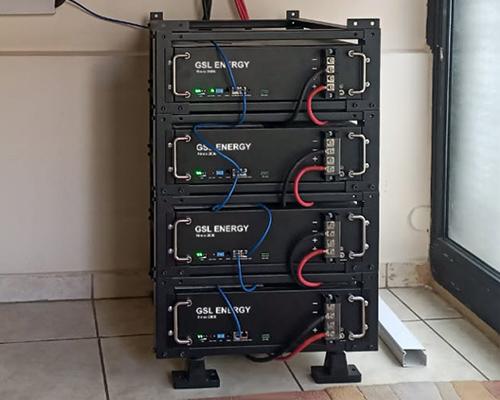Lithium-ion batteries (Li-ion) are a widely used type of rechargeable battery. They are particularly popular in applications such as solar energy storage.
This popularity stems from their high energy density and lightweight nature. Additionally, they have relatively low self-discharge rates, making them more efficient for long-term use. Li-ion batteries are rapidly becoming the preferred choice for grid-tied solar storage within the solar industry.
In recent years, the electric car industry has significantly influenced the evolution of lithium-ion batteries. The developments notably occurred almost on a monthly basis. Of course, we all know Elon Musk and the amazing Tesla Powerwall, which also relies on this technology.
How Does Li-ion Battery Work?
Lithium-ion batteries work based on the movement of lithium ions between the positive and negative electrodes. This process occurs during both the charging and discharging cycles.
These batteries typically consist of three main components: a cathode (positive electrode), an anode (negative electrode), and an electrolyte.
The cathode is usually made from materials like lithium cobalt oxide (LiCoO2) or lithium iron phosphate (LiFePO4). The anode is commonly composed of graphite. The electrolyte is a lithium salt dissolved in an organic solvent.
Charging
When a lithium-ion battery is charged, lithium ions move from the cathode, through the electrolyte, to the anode. During this process, the anode, made of graphite, stores the lithium ions.
Simultaneously, electrons are released from the cathode and travel through the external circuit, providing electrical energy.
Discharging
In contrast, during discharge, which occurs when the battery powers a device or system, the stored lithium ions in the anode travel back through the electrolyte to the cathode.
This movement allows the release of electrons at the cathode, generating an electrical current that powers the connected devices or systems.

Lithium-ion Battery Advantages
Li-ion batteries offer several key advantages that make them a preferred choice in various applications:
- High Energy Density — Li-ion batteries can store a large amount of energy relative to their size and weight.
- Low Self-Discharge — They retain charge better than many other rechargeable batteries when not in use.
- No Memory Effect — They do not require full discharge before recharging.
- Fast Charging — Capable of being charged relatively quickly compared to other solar battery types.
Lithium-ion Battery Disadvantages
Despite their many benefits, lithium-ion batteries also have several disadvantages to consider:
- Protection Circuit Required — Needs a protection circuit to keep voltage and current within safe limits.
- Aging Effect — Subject to aging even when not in use; storing in a cool place at 40% charge can mitigate this effect.
- Transportation Restrictions — Larger quantities are subject to regulatory control, though this does not affect personal carry-on batteries.
- High Manufacturing Cost — Approximately 40% more expensive to produce than nickel-cadmium batteries.
- Not Fully Mature — The metals and chemicals used in these batteries are still evolving, indicating a lack of full maturity in the technology.
The Role of Lithium-Ion Batteries in Energy Storage
In the solar industry, lithium-ion batteries are increasingly used for storing energy generated by solar panels.
These batteries store excess power during sunny periods for later use, such as during the night or on cloudy days. Thereby it can optimise the use of solar energy.
This energy storage capability contributes to greater energy independence and reliability, especially for off-grid or hybrid solar systems.
Advancements in lithium-ion battery technology have further enhanced their appeal by improving their lifespan, safety, and efficiency.
Moreover, these batteries are compatible with various battery management systems. Which allows for efficient monitoring and control of the energy flow in solar installations.
Reviewed by

Tom Ransome
Co-Founder of Renewables4U and renewable energy advocate. He has experience and extensive knowledge in the field, including a groundbreaking academic thesis and a significant role in Australia's solar industry since 2016. With a BA in Business Studies, focusing on finance and management, Tom merges business acumen with technical expertise to deliver economically and eco-friendly projects.

